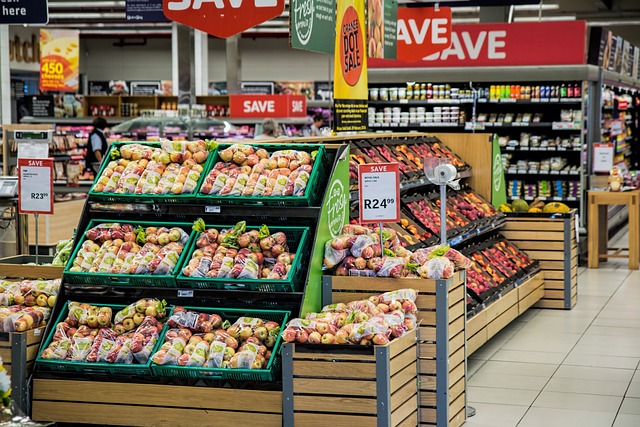How to Host a Profitable Garage Sale: Step-by-Step
Turn clutter into cash with a well-planned garage sale. This guide walks you through pricing secondhand goods, promoting your event, and creating an inviting shopping experience. Learn practical tips on tagging, marketing, payments, and safety to run a smooth, profitable sale while supporting sustainable reuse and attracting eager buyers.

How to Host a Profitable Garage Sale: Step-by-Step
Smart Pricing for Preowned Goods
Setting the right price is one of the most important factors in a successful garage sale. A practical guideline is to list most items between 10 and 30 percent of their original retail price, adjusting based on condition, age, and local demand. Price clothing, toys, and household items at lower percentages; for better-condition or brand-name pieces, aim at the higher end of the range. Clearly label prices with readable tags and bundle small items to increase perceived value and simplify transactions. For antiques or electronics, do a quick online check of current secondhand prices so you can price competitively while protecting value. Finally, be ready to negotiate and consider offering discounts at the end of the day to clear remaining stock.
Promote Your Sale to Bring People In
Attracting foot traffic requires a mix of offline and online promotion. Put up large, legible signs at key intersections and near main roads, including the date, time, and a directional arrow. Share your sale on neighborhood social networks, community boards, and online marketplaces, and include photos of standout items to catch the eye of serious buyers. Use concise listings with keywords like garage sale, estate sale, yard sale, and the most desirable categories you have, such as furniture or electronics. If permitted, post in local social media groups and neighborhood apps the week of the sale and the morning of the event to remind nearby shoppers.
Create a Shopper-Friendly Layout
A welcoming layout keeps customers browsing longer and buying more. Arrange tables and displays so shoppers can move easily without crowding. Group similar items together—kitchenware on one table, books on another, clothes on racks—so people can find what they want quickly. Vary display heights using tables, boxes, and racks to make the spread more visually appealing. Keep fragile and high-value items in a visible spot near the checkout area for supervision. Clean and tidy merchandise, and provide good lighting for early-morning or evening sales. Consider adding a small dressing area for clothing and a sign that indicates sizes and conditions.
Equipment and Supplies to Bring
| Essential Equipment | Purpose | Estimated Cost |
|---|---|---|
| Folding tables | Display surfaces | $15-30 each |
| Price tags and labels | Marking items clearly | $5-10 |
| Cash box and change | Managing cash sales | $20-30 |
| Display racks | Hanging and presenting clothing | $25-40 |
| Signs and advertising materials | Promoting location and items | $10-20 |
Prices, rates, or cost estimates mentioned in this article are based on the latest available information but may change over time. Independent research is advised before making financial decisions.
Bringing a few extra supplies helps the sale run smoothly: tape, scissors, marker pens, plastic bags, a calculator, price stickers, and cleaning wipes. If you expect larger purchases, measure doorways and note dimensions of big items to avoid problems when buyers transport them.
Managing Transactions and Security
Keep money organized with a lockable cash box and a float of small bills and coins for change. Offer multiple payment options if possible; mobile payment services and QR codes can help you accommodate buyers who prefer cashless transactions. Always have at least two people working the sale to watch merchandise, assist customers, and handle money. Keep high-value items in sight, and limit the number of people handling fragile goods. For safety on sunny days, set up shade with a canopy and keep water available for helpers.
Local and Global Secondhand Culture
While the garage sale tradition is rooted in the United States, similar practices thrive worldwide. Flea markets, car boot sales, and neighborhood swap meets are popular in Europe and beyond, often reflecting local tastes and seasonal rhythms. In places like Kosovo and other European regions, secondhand markets have become socially and environmentally meaningful, promoting reuse and offering affordable options for shoppers. Regardless of location, the core appeal remains the same: community connection, good deals, and a chance to give items a second life.
Final Tips for a Smooth, Successful Sale
Start early with setup and clearly mark parking or access points for visitors. Keep merchandise well organized and consider grouping items into thematic bundles or creating bargain bins to boost impulse buys. Be courteous and ready to answer questions about item history or condition. If an item is heavy or large, have a plan for helping buyers load it into vehicles. At the end of the sale, consider donating leftovers to a local charity or thrift store; this saves disposal time and supports a good cause while extending the life of usable goods.
Running a successful garage sale takes planning, clear pricing, effective promotion, and attention to the shopper experience. With the right preparation and mindset, you can declutter your home, earn extra money, and contribute to sustainable consumption by finding new homes for preowned items.






